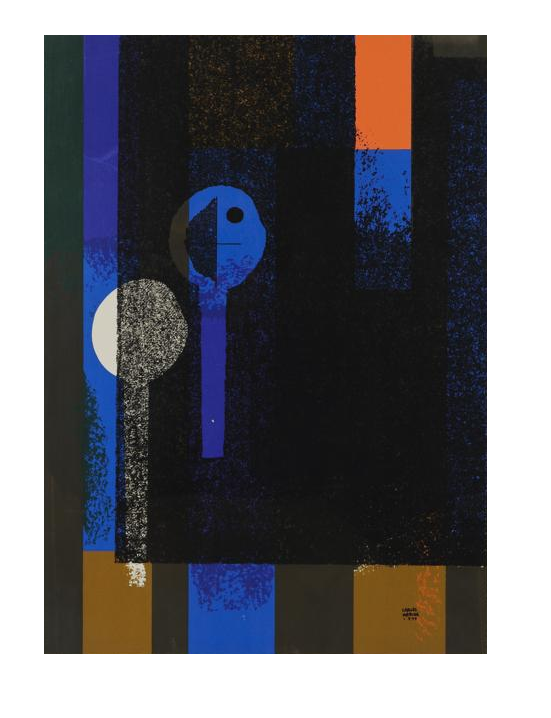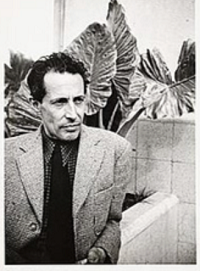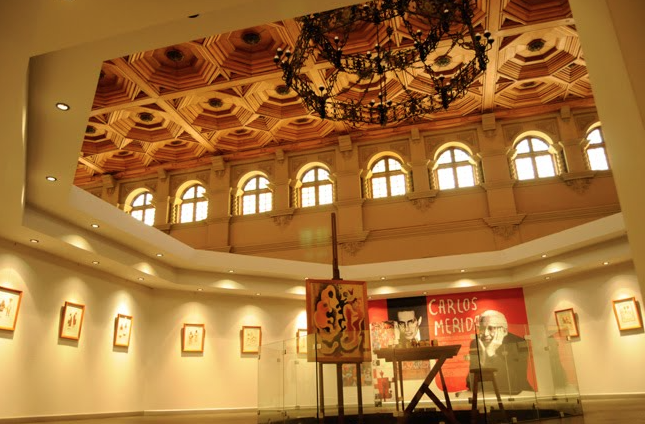

Carlos Merida studied art and music while growing up in Guatemala. Born in 1891, he was of mixed Spanish/Mayan-Quiche heritage, which he promoted throughout his life. He was known for his painting, drawing, and printmaking, and he was a major force in the Mexican muralist movement after working with Diego Rivera on murals he was creating after the Mexican revolution in the 1900s. His style differed at first in that he was non-figurative, and later geometric; he was the first Latin American to fuse modern European painting to Latin American themes. At 19, he traveled in 1910 to Europe to study art and he became friends with, and was influenced by, Modigliani, Picasso and Mondrian. It was in Europe where he first became friends with Rivera, which led to a lifelong relationship with the best of Mexico’s artists. After studying in Europe, he returned to Guatemala where he became more appreciative of the folklore and folk art that was common to him in his childhood. Merida, Diego Rivera and Gerardo Murillo became committed to promoting the handcrafts and arts of Mexico and Central America, with a particular interest in Guatemalan textiles.

Merida became best known for his canvas and mural works. One of his largest murals, on the Benito Juarez housing complex, was completely destroyed in the 1985 Mexico City earthquake and a monument to it now exists south of the city. His work can be found in major public and private collections worldwide. Between 1928-’48, he had 63 exhibitions in the U.S and Mexico alone – averaging three exhibits a year! In the 1950s he received major prizes in Guatemala, Brazil, Puerto Rico and Mexico. In 1963 he donated canvasses, graphic pieces, and mural sketches to The Universidad Nacional Autonoma de Mexico. He died in Mexico City in 1985 at the age of 94.
Carlos Mérida – Gemelos Serigrafia/silk screen
Carlos Mérida 1891-1985. Mérida estudió arte y la música mientras crecía en Guatemala. Era de herencia española mixta / Maya-Quiché, lo cual promovió durante toda su vida. Era conocido por su pintura, dibujo, grabado, y él era una fuerza importante en el movimiento muralista mexicano después de trabajar con Diego Rivera en los murales que estaba creando después de la revolución mexicana en la década de 1900. Su estilo difería al principio en que no era figurativo, y más tarde geométrico; él fue el primer latinoamericano en fusionar la pintura europea moderna a temas latinoamericanos. A los 19 años viajó en 1910 a Europa para estudiar el arte y se hizo amigo, y fue influenciado por Modigliani, Picasso y Mondrian. Fue en Europa donde por primera vez se hizo amigo de Rivera que dio lugar a una relación de por vida con lo mejores artistas de México. Después de estudiar en Europa regresó a Guatemala donde llegó a tener mas aprecio por el folclore y el arte popular que era común en su infancia. Mérida, Diego Rivera y Gerardo Murillo se comprometieron a promover las artes y artesanías de México y América Central, con un interés particular en la industria textil guatemalteca.
Mérida fue más conocido por sus lienzos y murales. Uno de sus murales más grandes, en el complejo de viviendas Benito Juárez, fue completamente destruido en el terremoto de México de 1985 y hay un monumento dedicado al mural en el sur de la ciudad. Su obra se encuentra en importantes colecciones públicas y privadas en todo el mundo. Entre 1928 a 1948 tuvo 63 exposiciones en los EE.UU. y México solamente – un promedio de tres exposiciones al año. En la década de 1950, recibió importantes premios en Guatemala, Brasil, Puerto Rico y México. En 1963 donó lienzos, piezas gráficas, dibujos y murales a la Universidad Nacional Autónoma de México. Murió en la Ciudad de México a la edad de 94.
